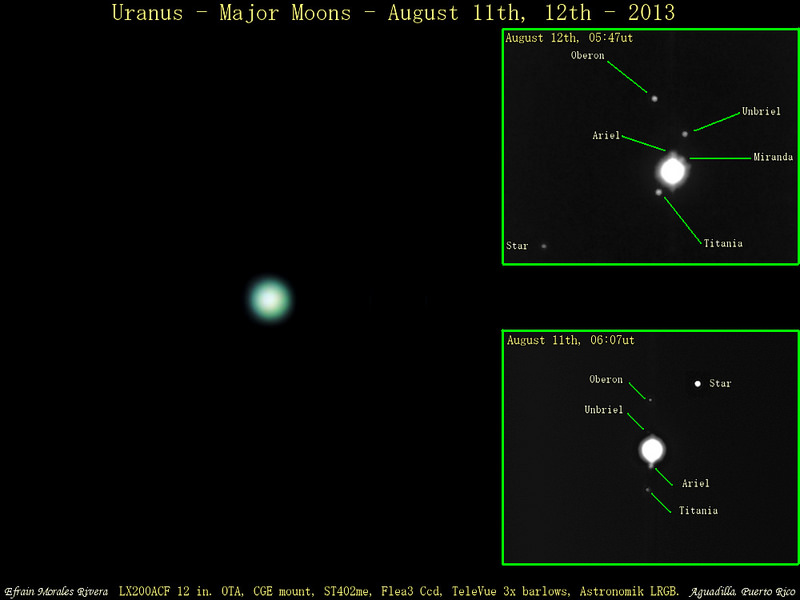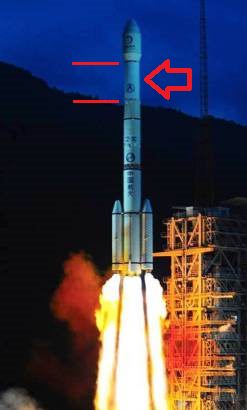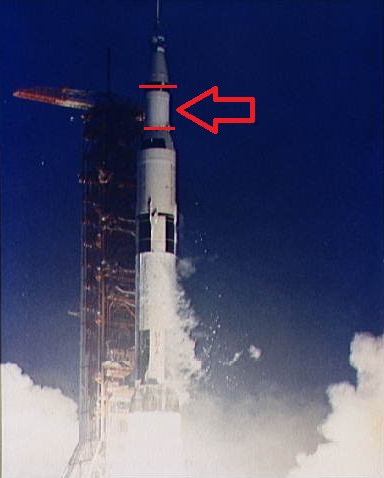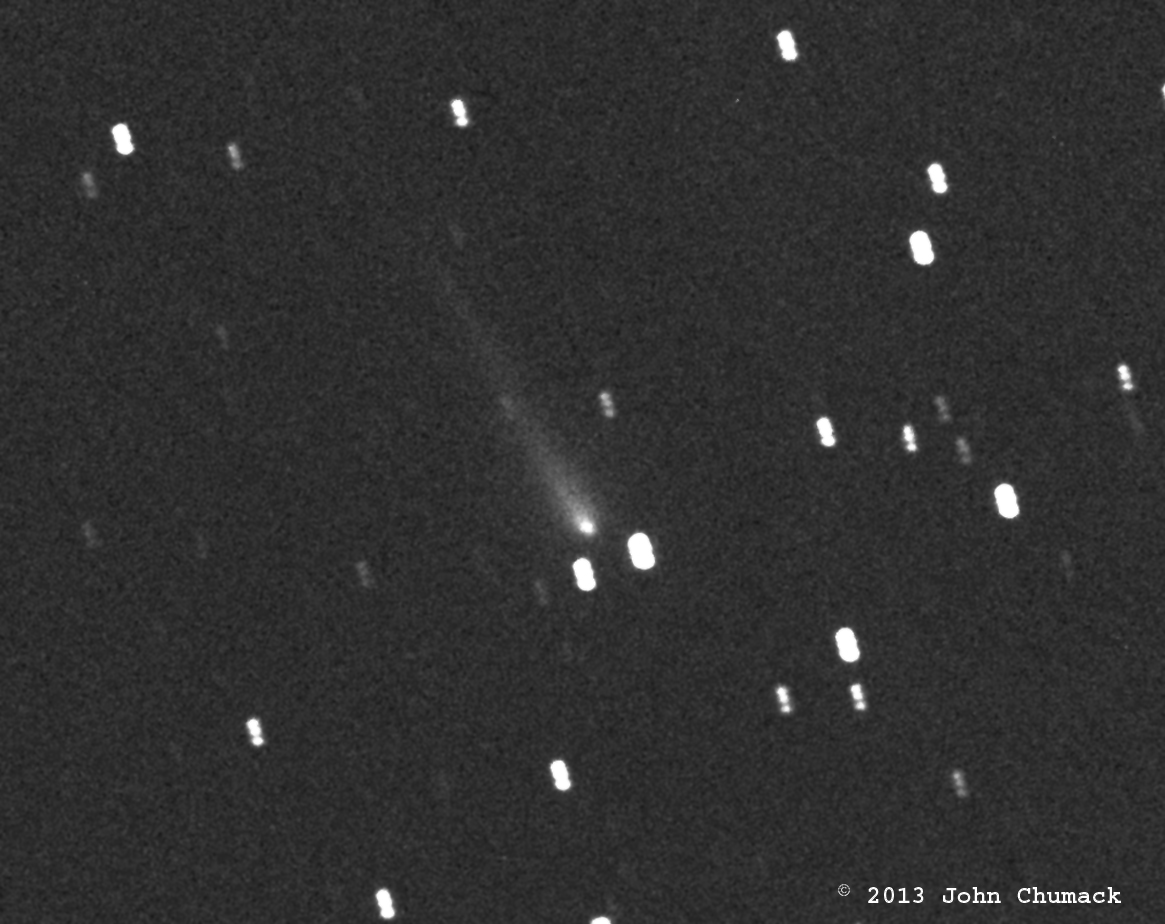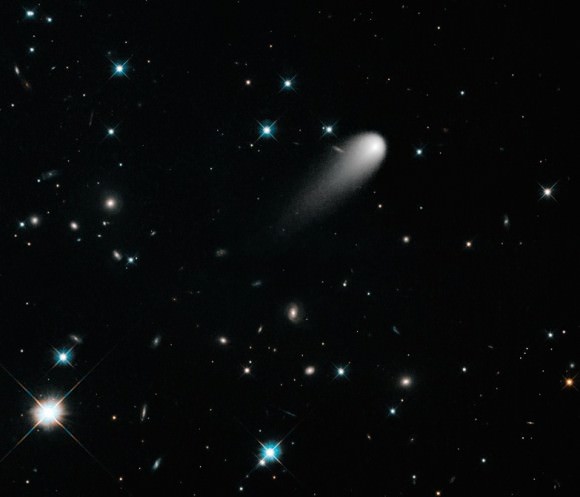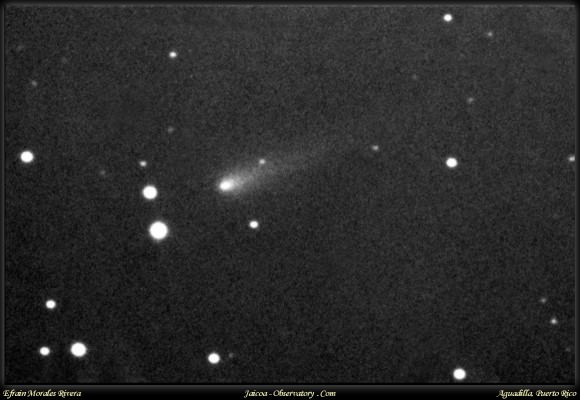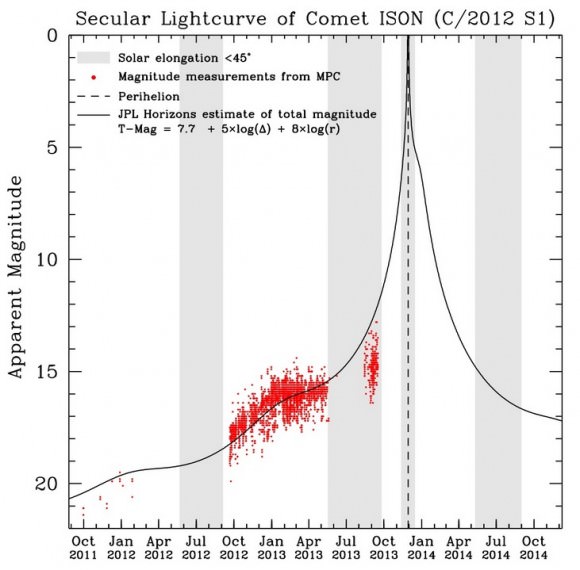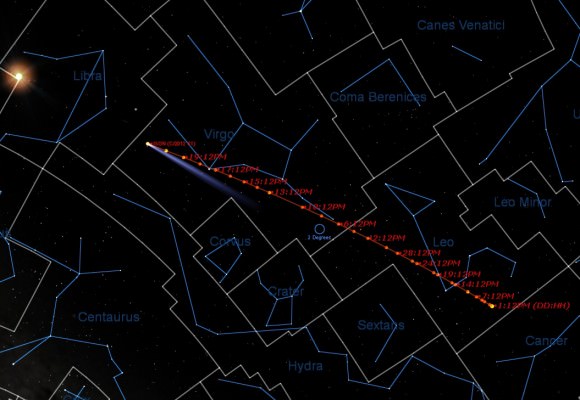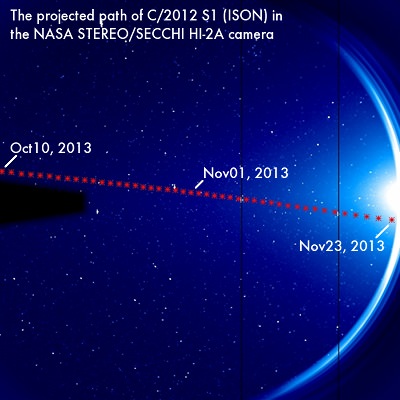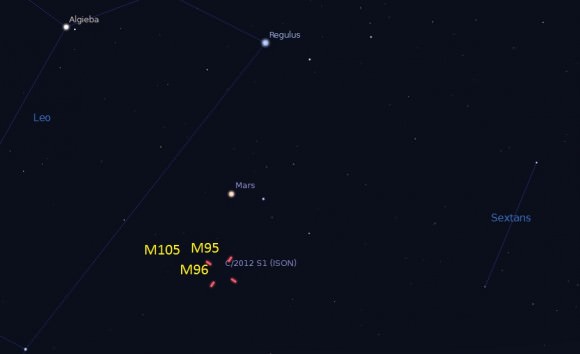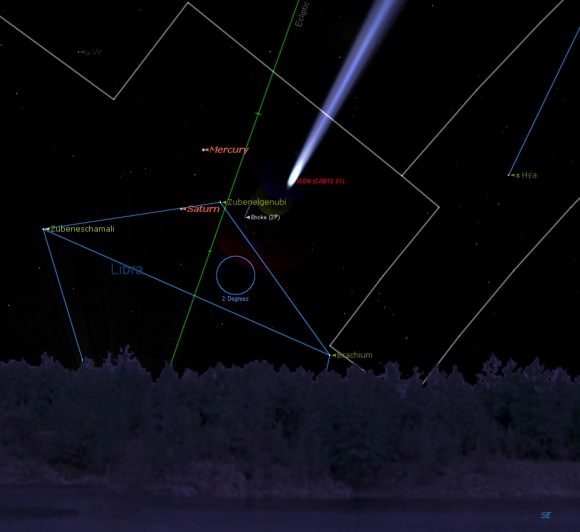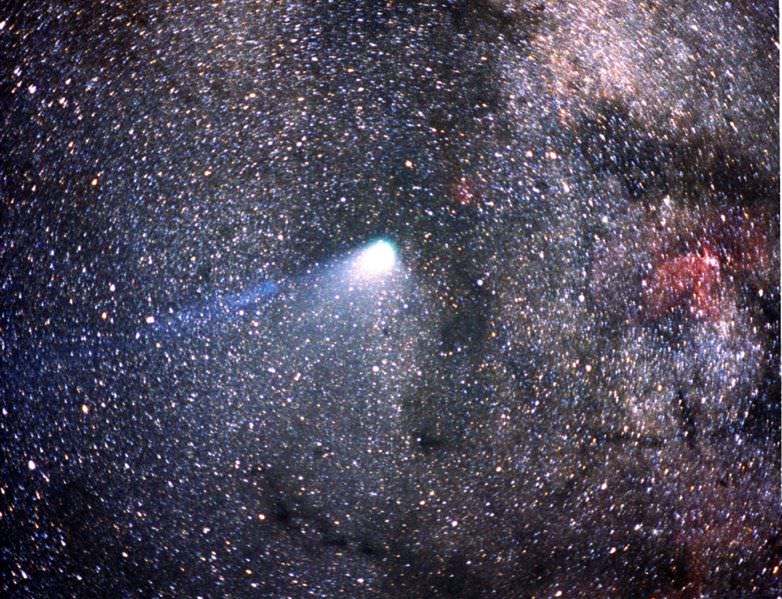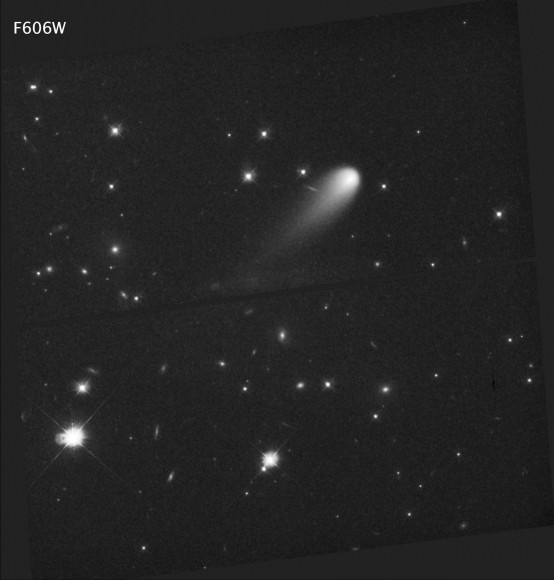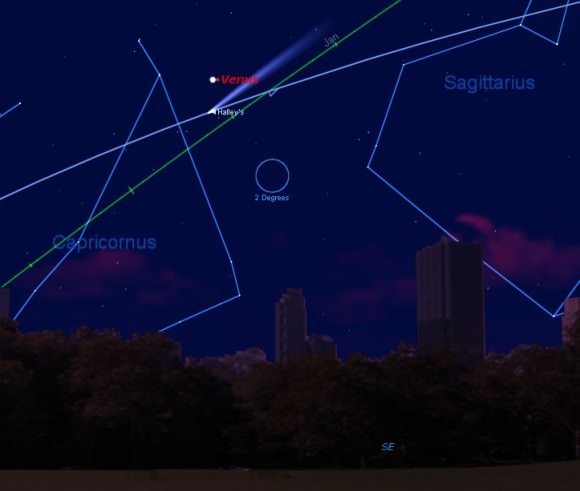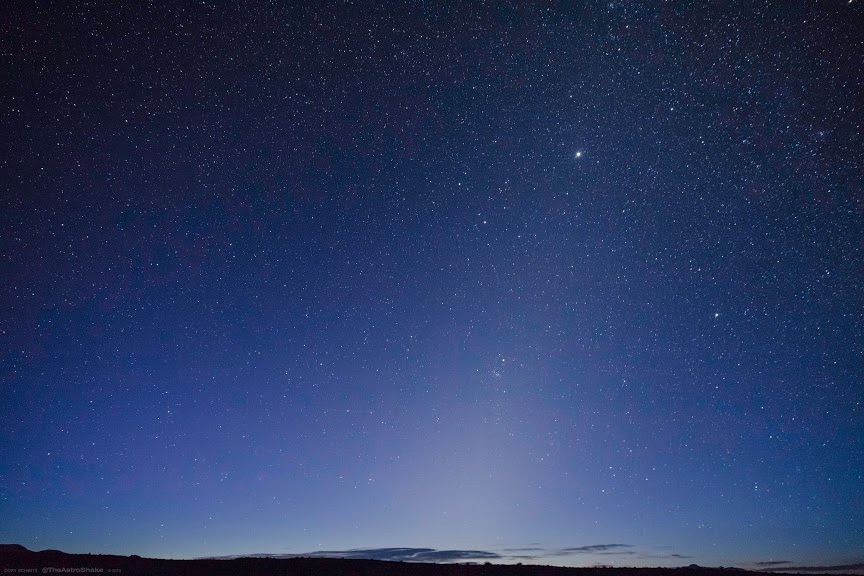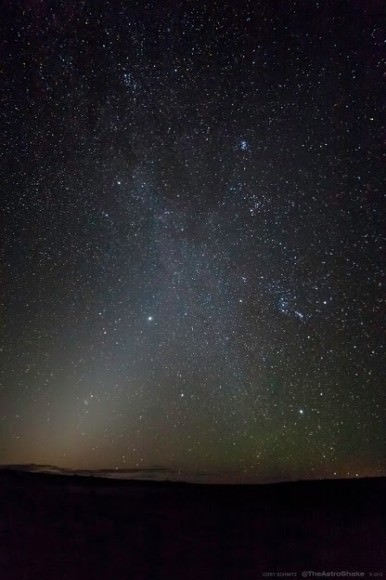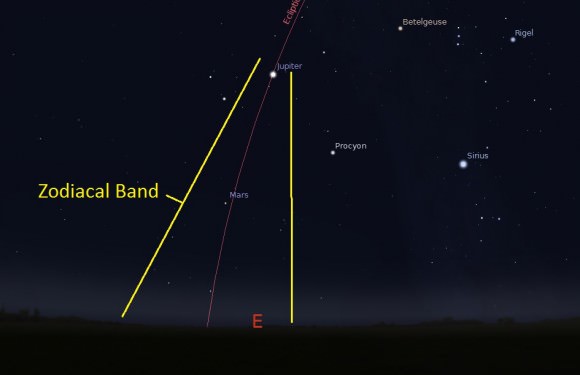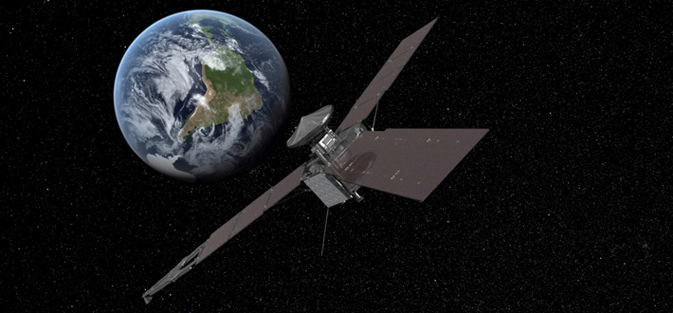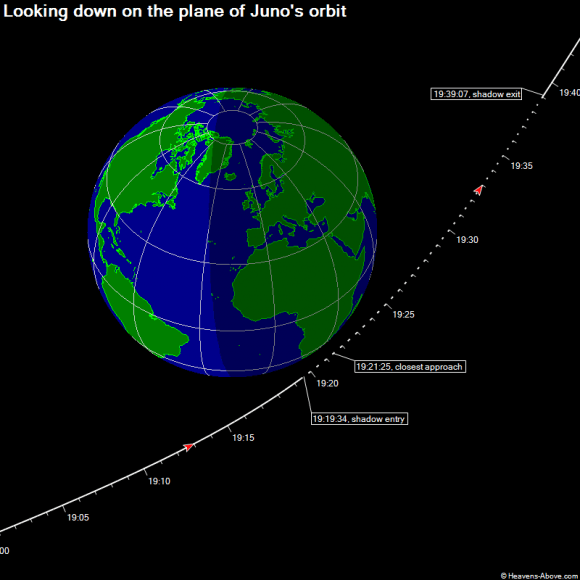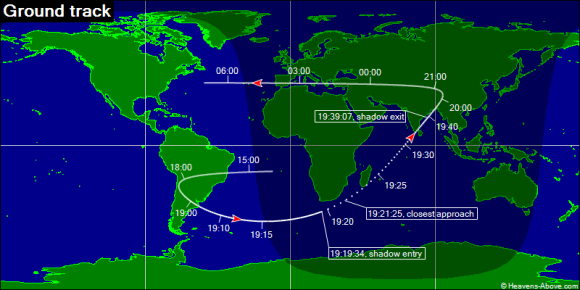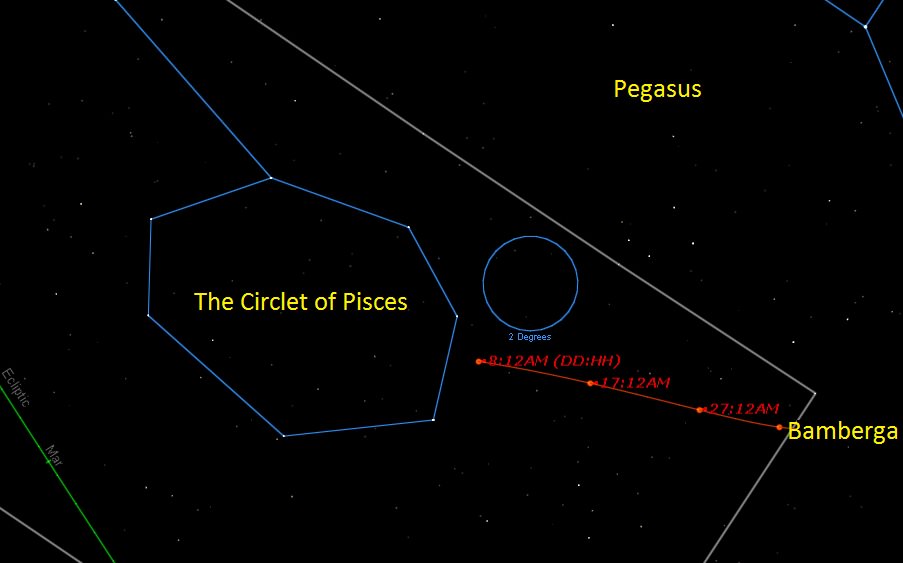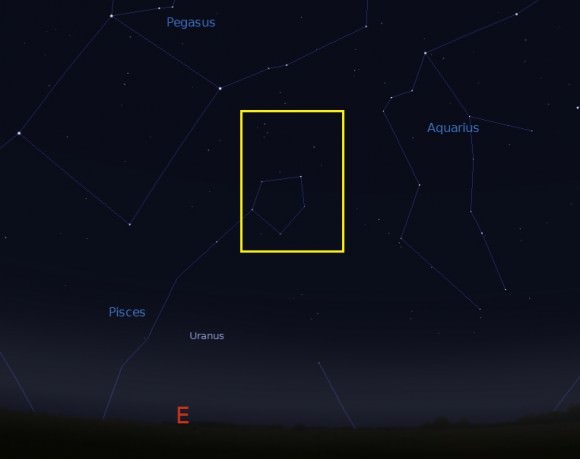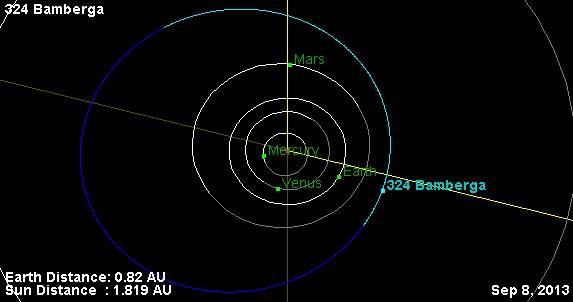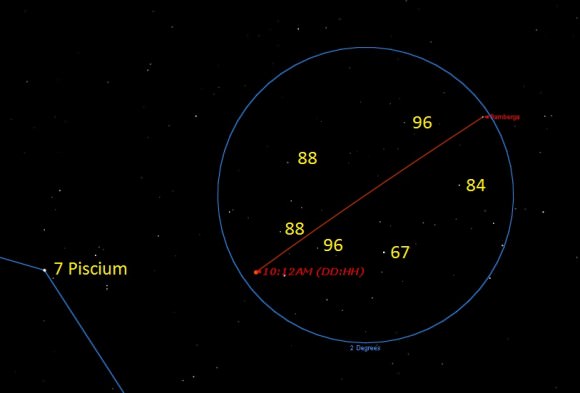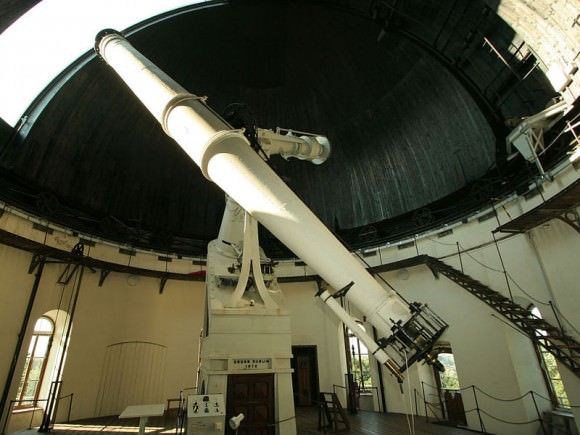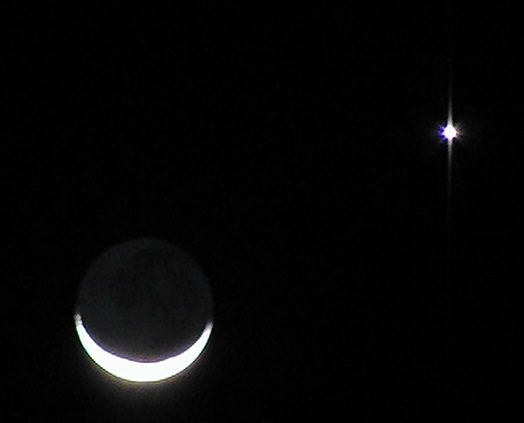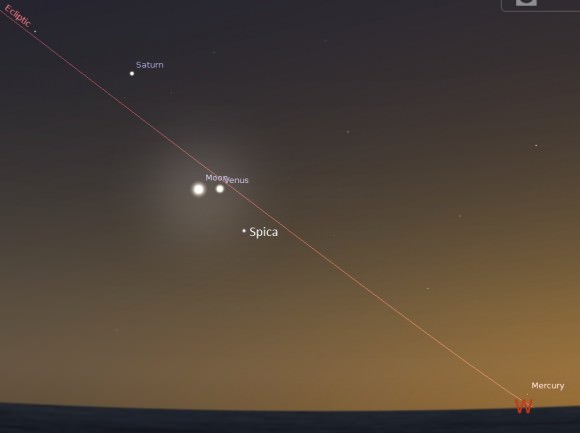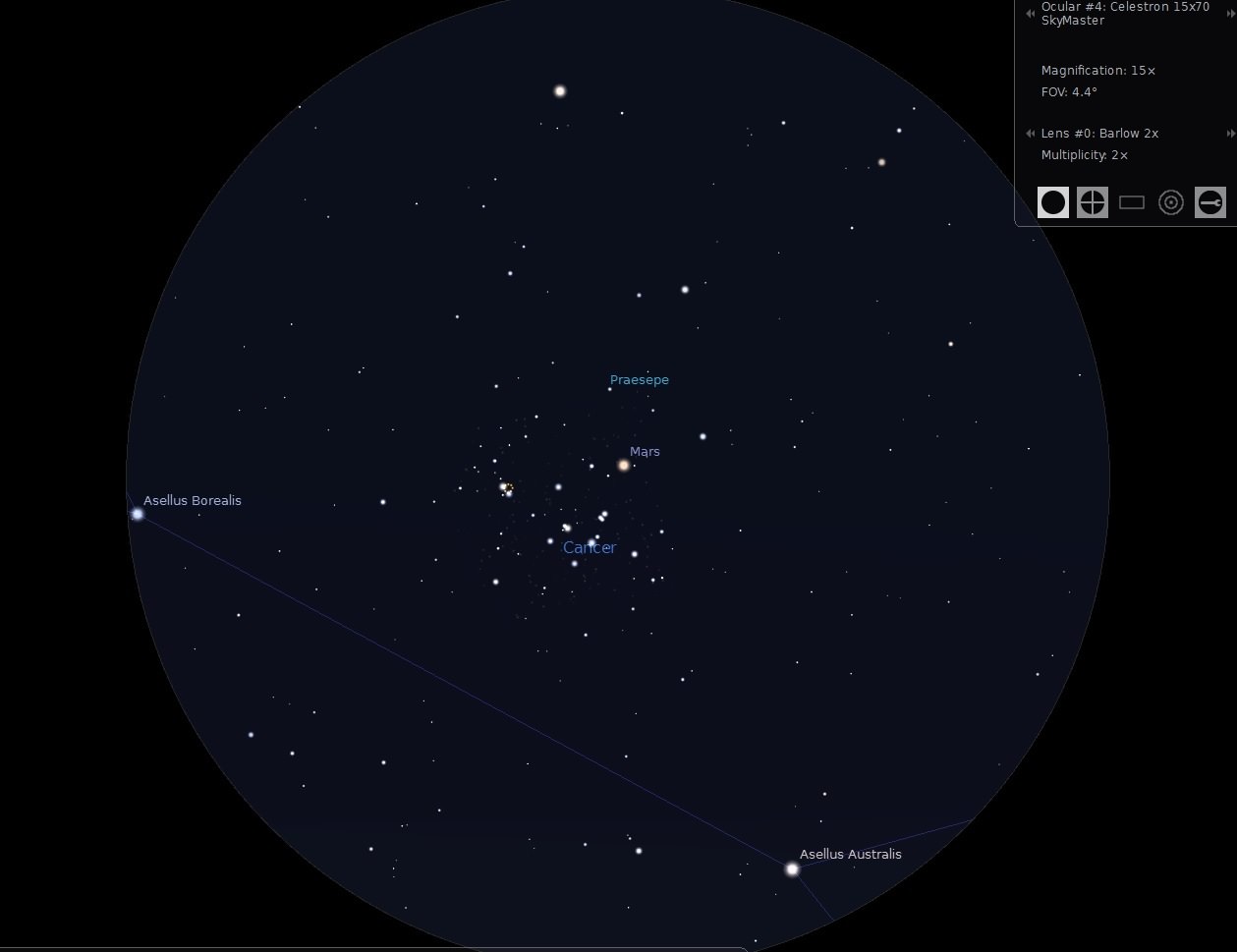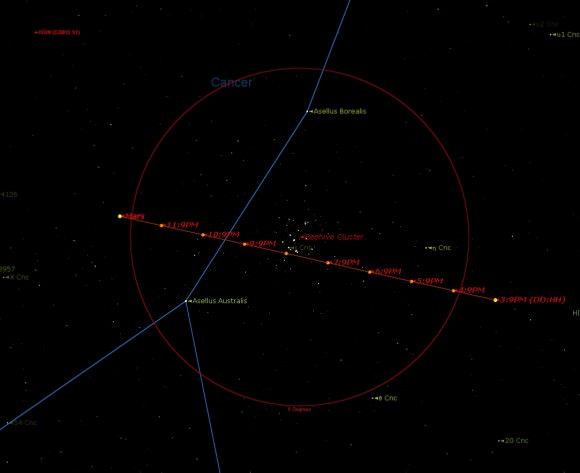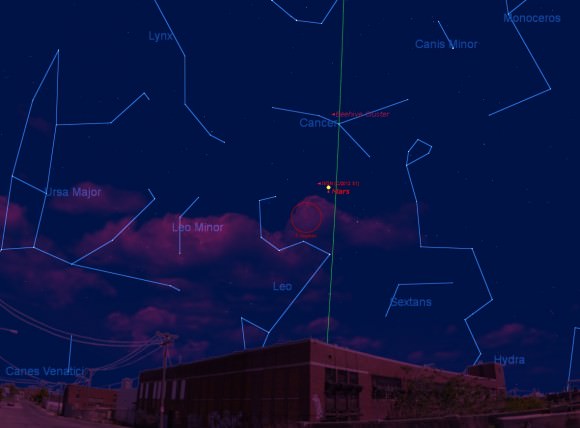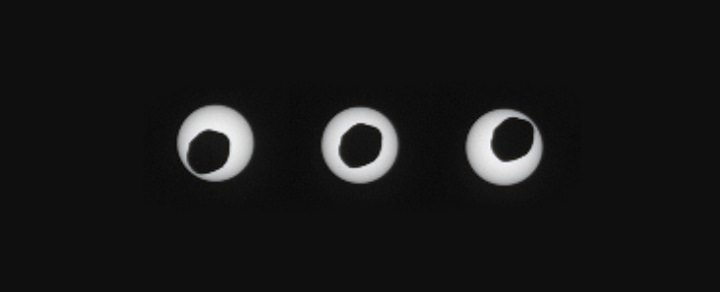Up for a challenge? Got a big 12” light bucket of a Dobsonian telescope and looking for something new to point it at? This week, as the Moon reaches New phase on October 4th and stays safely out of the late evening sky, why not check out Uranus and its retinue of moons. And yes, we’ve heard just about ALL the Uranus jokes —its pronounced yer-in-us, thank you very much — but feel free to attempt to pen an original if you must.
Now, back to astronomy. Uranus reaches opposition for 2013 on Thursday, October 3rd at 14:00 Universal Time. Opposition is the point in time that an outer planet rises as the Sun sets. In the case of Uranus, its opposition dates advance forward by about 4-5 days each year.
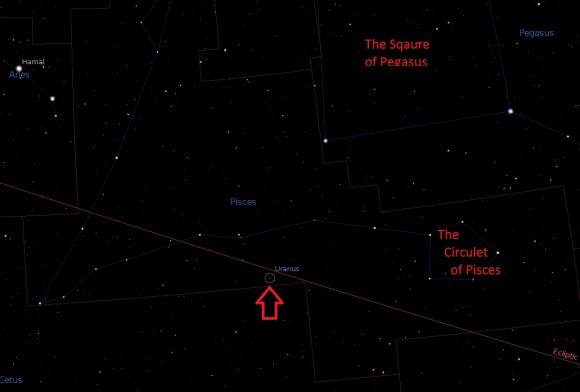
This also marks the start of the best time to hunt for the planet among the star fields of the constellation Pisces. Uranus will reach its maximum elevation above the southern horizon for northern hemisphere viewers for early October around local midnight. For observers south of the equator, Uranus will transit to the north. Incidentally, Uranus also currently sits near the equinoctial point occupied by the Sun during the March equinox, making viewing opportunities nearly equal for both hemispheres.
Uranus is 19.04 astronomical units distant during opposition 2013, or about 158 light minutes away. Shining at magnitude +5.8, Uranus presents a tiny blue-green disk just under 4” across at opposition.
Uranus currently lies six degrees SW of the +4.4 magnitude star Delta Piscium, on the border of the constellations Pisces and Cetus. Uranus will actually be crossing once again into the non-zodiacal constellation of Cetus later this year.
Discovered in 1781 by Sir William Herschel, Uranus has only completed 2 full orbits (2.75 to be precise) in its 84.3 year trips about the Sun. We can be thankful that William’s proposal to name the planet Geogium Sidus after his benefactor King George the III didn’t stick!
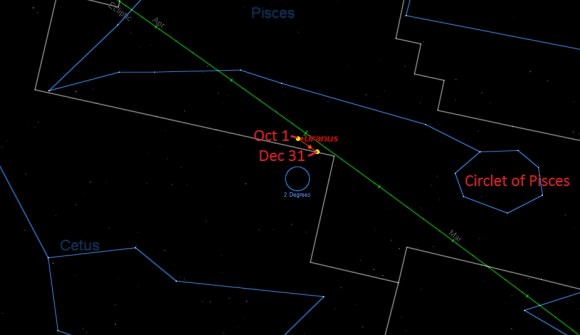
At opposition, Uranus will be located at;
Right Ascension: 0h 40’
Declination: +3° 25’
Five of the 27 known moons of Uranus are also within the grasp of a moderate-sized backyard scope as well. The trick is to catch ‘em near greatest elongation, when they appear farthest from the “glare of Uranus” (hey, there’s a freebie for a snicker or two). An eyepiece equipped with an occulting bar, or simply nudging Uranus out of the field of view can also help.
With magnitudes ranging from +13 to +16, the moons of Uranus are similar in brightness to Neptune’s large moon Triton or the tiny world Pluto.
The five brightest moons of Uranus and their respective maximum elongations are:
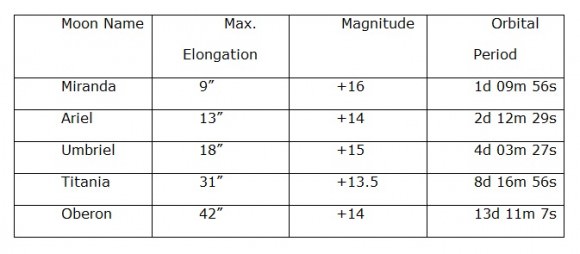
And here’s a handy finder chart for the coming month, showing maximum elongations for each:
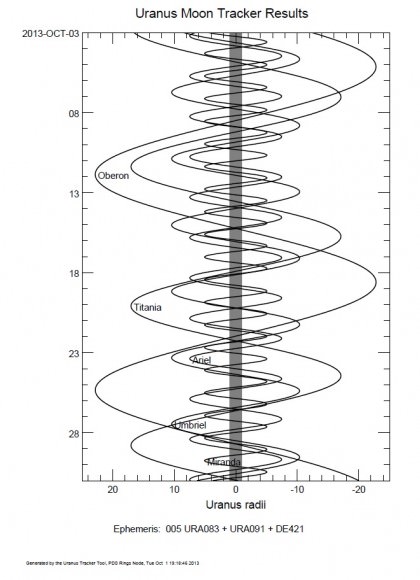
The first two moons were named Titania and Oberon by William’s son John after characters from William Shakespeare’s A Mid-Summer Night’s Dream. William discovered the first two moons of Uranus on the night of January 11th, 1787 using his 49.5” reflector. His scopes were so advanced for his day, that it wasn’t until over a half a century later that William Lassell discovered Umbriel and Ariel using the Liverpool Observatory’s 24” reflector in 1851.
Gerard Kuiper would later add tiny Miranda to the list, nabbing it with the McDonald Observatory’s 82” Otto Struve Telescope in 1948. We would then have to wait until Voyager 2’s 1986 flyby of Uranus in 1986 to add more. To date, Voyager 2 remains the only spacecraft to visit Uranus and Neptune.
The current convention established by the International Astronomical Union is to name the moons of Uranus after characters from the plays of Shakespeare or Alexander Pope’s Rape of the Lock.
There’s still a wide range of names in said literature to choose from!
It’s interesting to note that the orbits of the moons of Uranus are also currently tipped open about 25 degrees to our line of sight and widening. They were edge on in December 2007, and will be perpendicular to our Earthly view come 2029, after which they’ll head back to edge on in 2049. This is because Uranus and the orbits of its moons are tipped at a 97 degree angle relative to the planet’s orbit. This is why elongations for its moons are often quoted it terms of “north and south” of the planet, rather than the familiar east and west. Shadow transits of the moons can occur with about a year and a half during plane-crossing seasons, but they’re ~42 years apart and tough to spot on the tiny disk of Uranus!
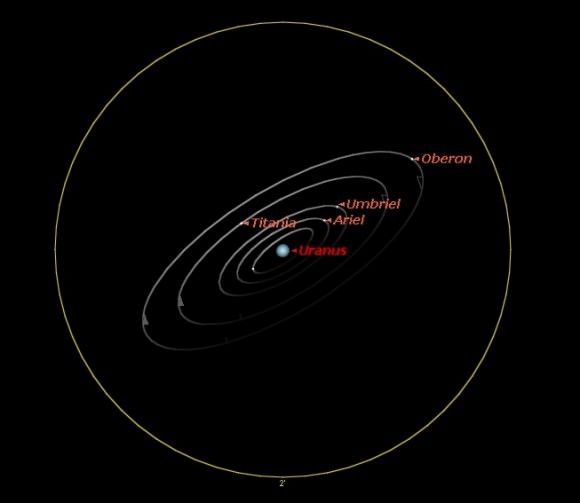
Uranus also reached aphelion in 2009 at 20.099 AU from the Sun —we’re still at the farther end of the spectrum, as oppositions of Uranus can range from 19.09 to 17.28 AU distant.
Uranus will rise earlier on each successive evening until it reaches quadrature at the end of the year on December 30th. At this point, it’ll be roughly due south at local sunset. Keep in mind, there’s also another ice giant worth hunting for in the adjacent constellation of Aquarius named Neptune.
So ignore those bad puns, and be sure to take out that 10” (scope, that is) and point it at Uranus!

